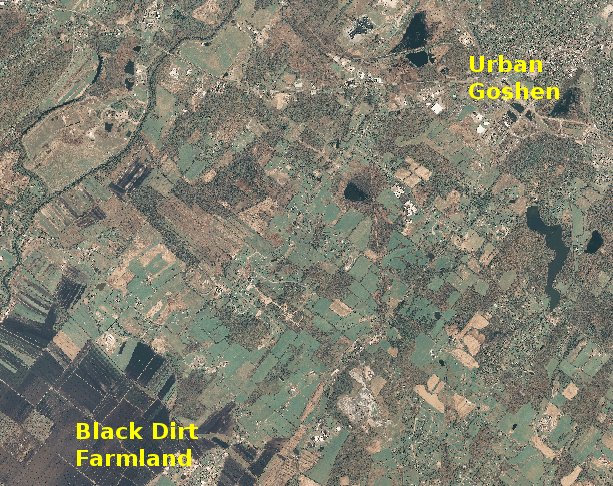Orange County
PDF report: pesticides-orange-2009
Entering Orange County
Orange County was chosen as the sampling area for our third round of testing based on its conjunction of high ground water dependence with heavier pesticide use. Pesticide use maps show the highest use per unit of area in the highly productive agricultural area known as the “black dirt” (organic soil) region used for concentrated vegetable production. The County Soil and Water Conservation District (SWCD) recommended candidate sampling sites and sampled the wells of those landowners who agreed.
Orange County relies heavily on local ground water for both public supplies and individual household wells. The largest urbanized areas are served by public water supply systems that use surface water and reservoirs. Smaller developed areas typically have water districts employing wells, while hamlets and isolated houses rely on individual wells.
Orange County has been one of the fastest growing areas of New York, developing heavily along its transportation corridors of NY Route 17 and the Thruway. The rapidly urbanizing Goshen area (photo below) is near the famed “black dirt” intensive vegetable production area.
Results
Orange County SWCD staff sampled 40 wells in 2007. As in Cortland and Schenectady counties, State lab analysis found no detectable levels of any of the 93 pesticides for which they tested with detection limits of 1 µg/L (1 part per billion) or less. Cornell’s immunoassay analysis found quantifiable levels of atrazine (two samples) and diazinon (one sample), but all at levels that were well below relevant drinking water quality standards. There were also even lower non-quantifiable trace detections of atrazine (3 samples), diazinon (1 sample) and metolachlor (5 samples). Nitrate results were good, with only one well above 5 mg/L nitrate-N, and none over 6 mg/L.
The work in Orange County provided an interesting contrast with concurrent round 4 work in Cayuga County.
Later resampling
Orange County wells were sampled in 2007 originally (round three), and resampled five times in 2011-2012. Detections in the original round were solely via ELISA, and all at trace levels. The 2011-2012 samples were also very clean (in pesticide terms) with one of 25 samples having a low level of dicamba, another having a low level of clethodim, and one with low levels of metolachlor ESA and dicamba.
The work in Orange County led to our fourth cycle in Cayuga County.
Fully detailed resampling results, with the original results from the same wells, are included in a PDF:
PDF revisit detections report: pesticides-resampling-detections

Aerial view of Goshen and black dirt area
Last updated 2023-09-21 sp17 AT Cornell.edu.